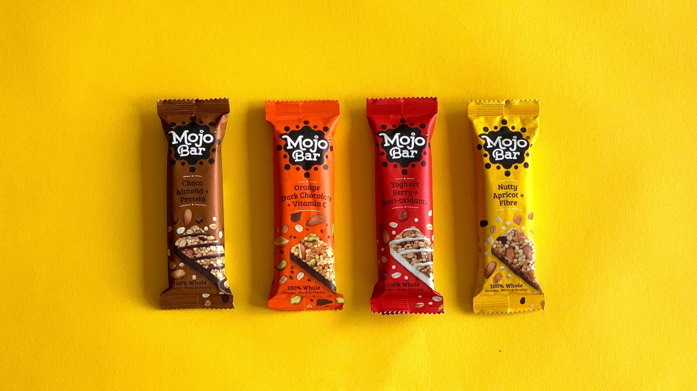
DID YOU KNOW?
- Three in five (60%) Indians eat snacks at least twice a day
- 15% of Indians are super snackers—snacking four or more times per day
- 70% of Indian adults now eat more snacks than meals on a given day, this is far more than the global average of over 22%
- Around 135 million people in India are facing the problem of obesity
India enjoys a wide variety of local snacks, be it Gujarat’s fafda, ghatiya, chivda or Ratlam’s sev or Bikaner’s aloo bhujia, Indians simply love their snacks. 3 in 4 Indian adults say that food is a major part of their identity. Furthermore, Indians connect with their culture through the snacks they eat.
There is a correlation between what we eat and our emotional state. The pressures of everyday life are driving Indians to treat themselves with snacks, almost two in five (37%) snackers do so to relieve stress (‘stress eating’). Meanwhile, other emotional reasons such as the desire to treat oneself (44%) and taking a break (42%) are encouraging consumers to indulge in snacking.
Snacking out of boredom, stress or frustration have a bad effect on a person’s health. Foods that are high in carbohydrates and fats can cause various problems like high cholesterol, diabetes, obesity, tooth decay, etc. Eating snacks in place of a meal is also harmful as the critical sources of nutrients are being replaced with snacks that lack such nutrients.
Snacks have traditionally been a companion to TV viewing; given that mobile devices are the ‘new TV’, especially during everyday commute, we see more and more Indians binging on unhealthy snacks. Often people end up constantly munching on snacks like chips, cookies, chocolates, etc in between meals while they are working. With the whole new “binge watching” trend comes along “binge munching” too.
Traditionally, Indian families would prepare snacks at home for consumption between meals or during travel. Over the years its seen that, with the rise in urban population, increasing per capita income, busier lifestyles, higher disposable incomes and need for convenience arising out of the fast-paced lifestyles, the demand for ready to eat, on-the-go snacks have increased, but what has remained constant is the urge for “Snacking”. In the past, a bulk of consumers munched on snacks without counting calories, but a significant shift in people’s lifestyle can now be seen where a growing number of consumers give more time and effort to regulate their diets and health by exploring various alternatives and natural health products to lead a healthier lifestyle.

Indian consumers are now looking at the functional benefits like added nutrition and lower calorie content while choosing a snack. Thus, snacks need to evolve and transform with these changing consumer lifestyles and requirements.
Snack bars like protein bars, energy bars, granola bars, etc can be a great healthy and quick on the go option to get you from one meal to the next, or even as part of a meal like breakfast or lunch. Snack bars are generally composed of rolled oats, honey & dry fruits and are superb energy boosters. Snack bars are not only convenient, budget friendly and portable but also pre-portioned and work as heavy meal replacements, which makes it easier to avoid overeating. In fact, some research suggests that pre-portioned foods such as snack bars could be beneficial when it comes to weight management. Snack bars are a culmination of several health benefits. A single snack bar holds all the nutrients one can get from a complete meal.
The market size of snacking products in India has increased from $2.14 billion in 2012 to $3.82 billion in 2016 to ~$4-5 Bn in 2019. Currently the Indian snack bar market is estimated to contribute ~$100 Mn of the overall snacking market, and is estimated to be worth $185 Bn by 2023, spurred by consumer demand for on-the-go healthier snacking alternatives and nutrition foods. Snack bars are gradually becoming very popular in India, especially among working professionals, hikers and anyone looking for a quick yet delicious pick-me-up. Filling of fruits, nuts, and cereals in these bars attracts health conscious consumers. Also globally, consumers consuming snack bars in geographies such as USA and Europe have been increasing year on year. The most active companies in the Indian snack bar market include Unibic, Mojo Bar , RiteBite, Yoga Bar and General Mills.

While a single bowl of bujia sev contains about 500-600 calories, a single cookie about 500-700 calories and a pack of chips about 300 calories, a snack bar like Mojo Bar contains only about 150-175 calories. MOJO Bar is a SMART snack with four variants/flavours: Choco Almond + Protein, Nutty Apricot + Fibre, Orange Dark Chocolate + Vitamin C and Yoghurt Berry +Anti-Oxidants. Real food in every sense of the term, as they do not contain artificial ingredients, preservatives and are even gluten-free. MOJO bars have the right proportion of good fats, protein, vitamins, fibre and carbs recommended by nutritionists for snack time meals.


